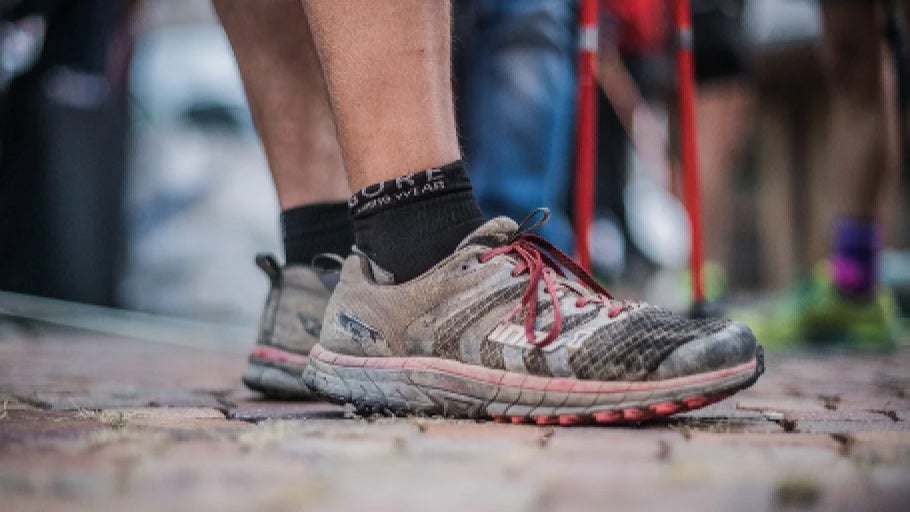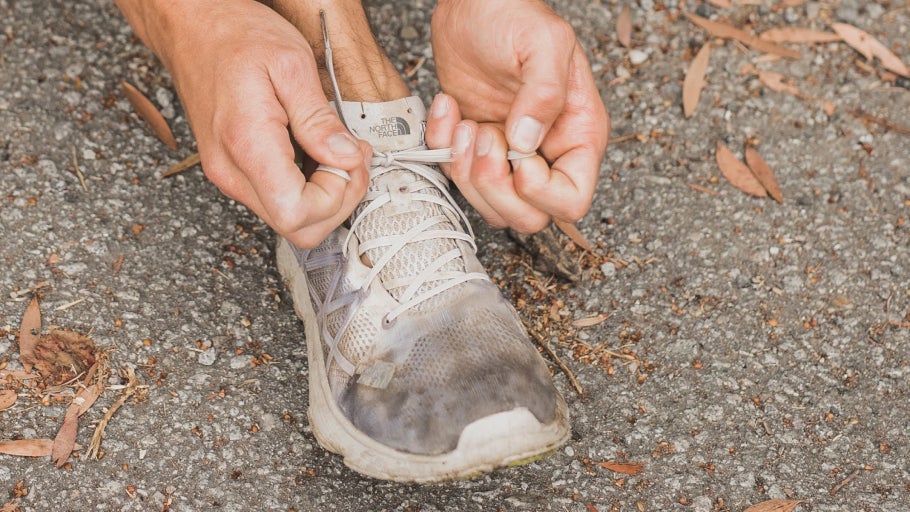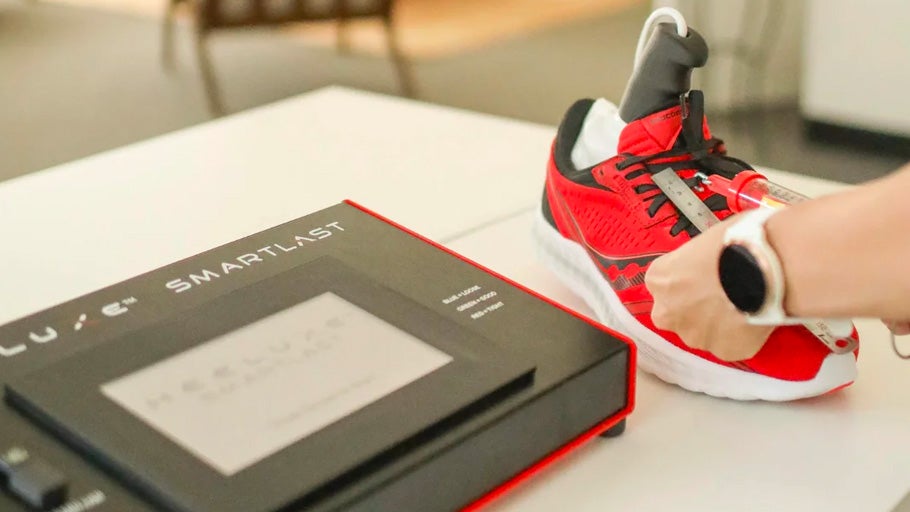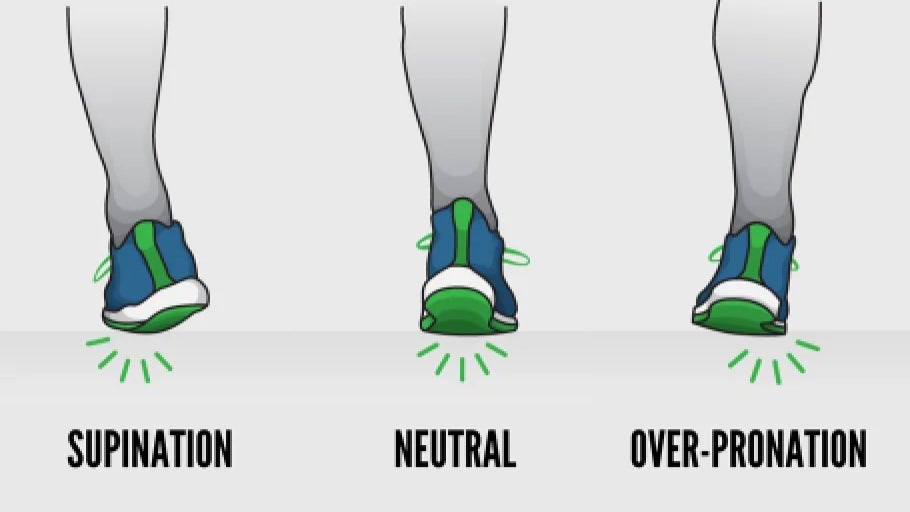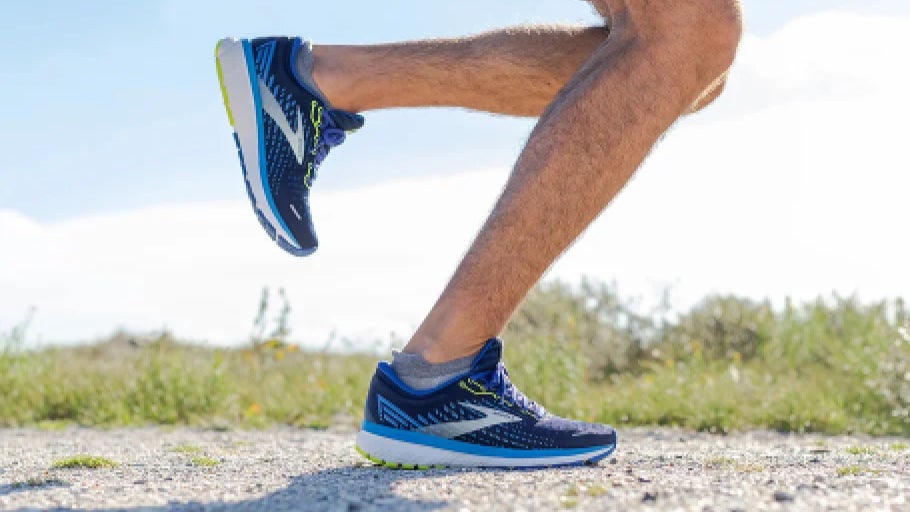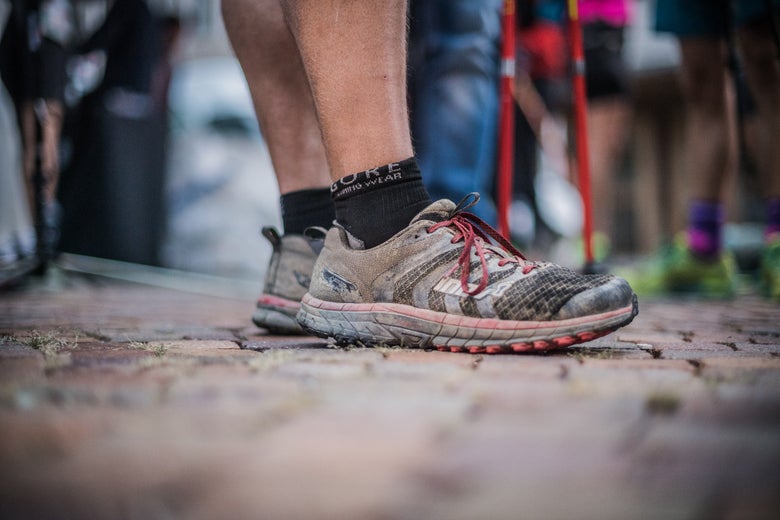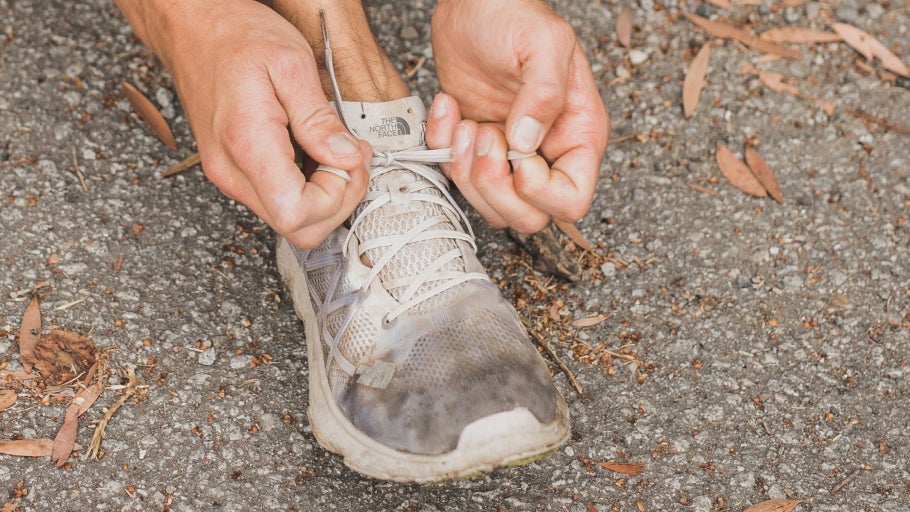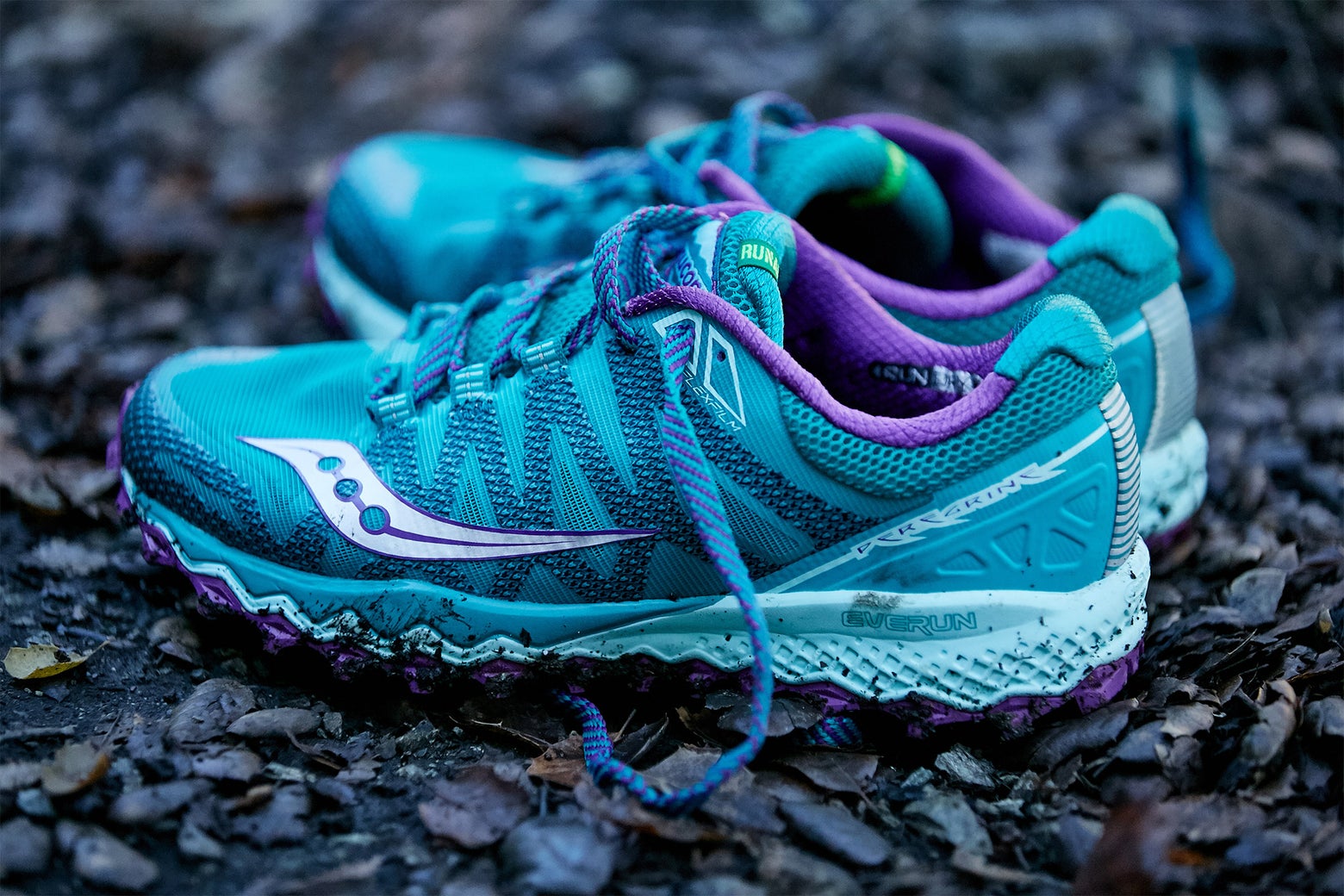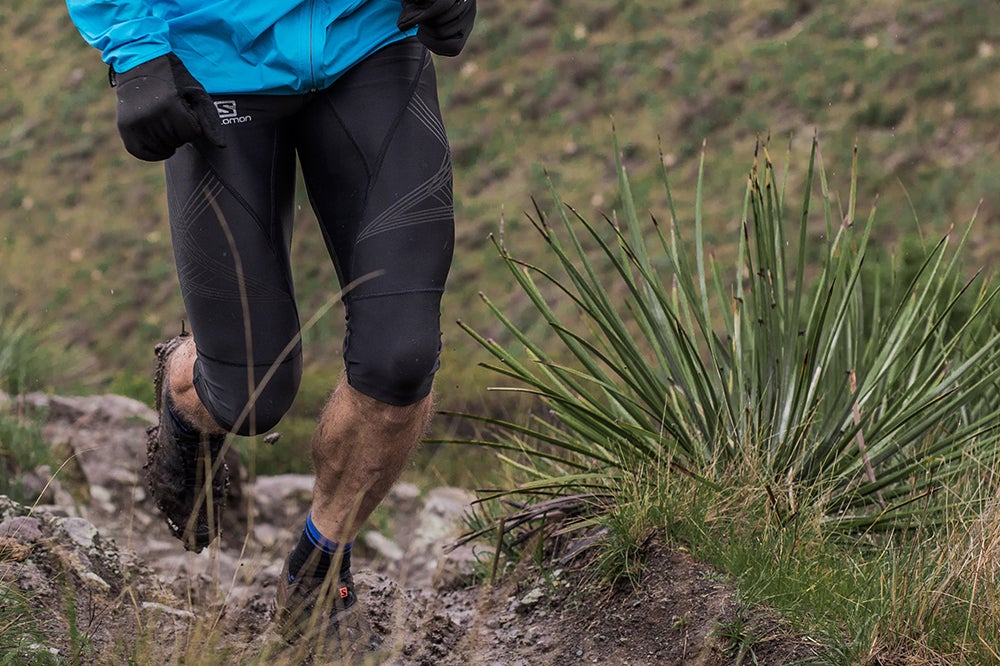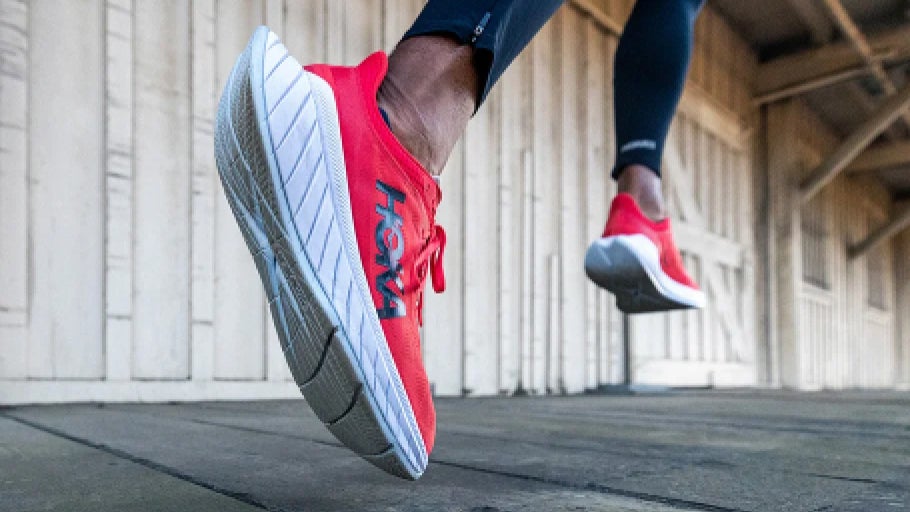
How to Clean Your Running Shoes
There’s nothing quite like slipping into a new pair of spotless running shoes. The fresh color, the snug fit, the bounce in your step, it all feels unbeatable. But after a few runs, the reality of muddy trails, dusty roads, and sweat sets in. Dirty shoes can be a badge of honor, but they also shorten your shoes’ lifespan.
Running shoes aren’t cheap, and a little cleaning goes a long way to help them last. Regularly washing your shoes keeps them performing their best, maintaining the cushioning, structure, and comfort you count on. We’ll walk you through how to clean your running shoes the right way so you can extend their life and keep them looking and feeling fresh.
Why Cleaning Running Shoes Matters
1. Preserve Performance and Cushioning
Over time, mud, sweat, and dirt can seep into your shoes’ fabric and foam. This buildup can make your shoes feel “flat”. By keeping them clean, you help preserve their cushioning and overall performance, so every run still feels smooth and supported.
2. Control Odor and Bacteria
Sweat and damp conditions create a perfect environment for odor-causing bacteria to thrive. Washing and fully drying your shoes helps prevent unpleasant smells and keeps your gear hygienic.
3. Extend Lifespan and Reduce Waste
Cleaning and caring for your shoes doesn’t just save you money, but it’s also better for the planet. Extending your shoes’ life means fewer pairs end up in landfills, and less energy is used in production. It’s a simple way to make your running routine a little more sustainable.
When (and How Often) to Clean Your Running Shoes
Just like you wouldn’t skip washing your favorite workout clothes, your running shoes deserve the same attention, but that doesn’t mean you need to scrub them after every mile. The best cleaning schedule depends on how often you run, where you run, and the type of shoes you wear.
Light Surface Cleaning vs. Deep Cleaning
If you mostly run on dry roads or treadmills, a quick light clean every week or two is usually enough. Knock off any loose dirt, brush away dust, and wipe the uppers with a damp cloth.
On the other hand, if you’re logging miles on muddy trails, wet terrain, or in winter weather, your shoes may need a deeper clean after every few uses. When mud starts to harden or water leaves stains, that’s your cue to give them a proper wash using the full step-by-step process below.
How Often Should You Clean Running Shoes?
A good rule of thumb:
- Light cleaning: Every 1–2 weeks (or after any noticeably dirty run)
- Deep cleaning: Every 4–6 weeks, depending on use and environment
- Trail runners: Clean more frequently, as mud and debris can build up quickly and affect traction
Keeping up with small cleanings between runs will make deep cleaning faster and prevent long-term grime from settling in.
Don’t Over Clean
While it’s tempting to keep your shoes spotless, over-cleaning can do more harm than good. Excess moisture and soap can break down adhesives or soften materials prematurely. Stick to gentle methods and let your shoes fully dry before wearing them again.
Signs Your Shoes Need a Wash
If you’re unsure when it’s time to clean, look out for these telltale signs:
- Dirt or mud buildup that won’t brush off
- A musty or sour smell
- Visible salt stains or water marks
- The fabric feels stiff or sticky
- The tread is packed with mud or pebbles
When in doubt, a quick clean is better than letting grime set in. Your shoes and your nose will thank you later.
What You’ll Need (Tools & Materials)
Before diving in, gather your cleaning essentials. You don’t need fancy equipment, just a few household items and a little bit of patience. Having everything ready will make the process smoother (and keep you from accidentally soaking your shoes in the sink for too long).
Basic Cleaning Supplies
- A free-standing bucket for cleaning and rinsing the shoes
- A bristled scrub, toothbrush, or sponge
- A mild cleaning solution, such as dish soap (mild laundry detergent, baking soda, or vinegar optional)
- Clean water for rinsing
- Soft microfiber towel for drying (newspaper, coffee filter, paper towel, or tissue paper optional)
- Mesh bag (optional)
- Fan or Shoe Dryer (Optional)
Step-by-Step Running Shoe Cleaning Process
Cleaning your running shoes doesn’t have to be complicated. Follow these steps to safely remove dirt, sweat, and buildup without damaging the structure or performance of your shoes.
1. Remove Loose Dirt First
Start by knocking your shoes together outside or over a trash can to shake off any loose mud and debris. Then, use a dry brush or toothbrush to sweep away dirt from the outsole, midsole, and upper. Removing dry debris first keeps you from smearing it deeper into the fabric once water is involved.
2. Disassemble Removable Parts
Before you start scrubbing, take out the insoles and shoelaces.
- Insoles/liners: Wipe them down with a damp cloth and mild soap or laundry detergent. If they smell, sprinkle a bit of baking soda and let it sit for a few hours before brushing off.
- Laces: Place them in a mesh laundry bag and toss them in the washing machine on a gentle cycle, or hand-wash them in warm, soapy water.
Let both the insoles and laces air dry completely while you clean the rest of the shoe.
3. Clean the Outsole and Midsole
Next, tackle the bottom and sides of your shoes.
- Mix a small amount of mild detergent or dish soap in your bucket of warm water.
- Use a stiffer brush or an old toothbrush to scrub away dirt, paying attention to grooves and lugs (especially on trail shoes).
- For stubborn mud or tiny stones stuck in the tread, use the edge of the brush or a toothpick to gently remove them.
- Rinse with clean water or wipe down with a damp cloth until residue is gone.
This step helps restore traction and prevents debris buildup that can affect your grip on runs.
4. Clean the Upper (Fabric, Mesh, or Knit)
The upper of your shoe is usually the most delicate part, so handle it gently.
- Dip a soft brush or sponge into your soapy water solution and lightly scrub the surface in circular motions.
- Spot clean heavily stained areas, but avoid soaking the entire shoe, which can weaken adhesives and warp the structure.
- Rinse with a clean, damp cloth to remove any leftover soap.
Check what materials your shoe is made of before soaking. If the shoes are made up of waterproof materials, skip the soaking entirely, just use a damp cloth and reapply a water-repellent treatment afterward if needed.
5. Rinse and Remove Soap Residue
After scrubbing, make sure to remove all soap.
- Use a clean sponge or cloth dipped in water to gently wipe away suds.
- Avoid holding your shoes directly under running water. Too much water can damage the internal foam.
- When done, gently squeeze (don’t twist) the shoe to remove excess water.
6. Drying & Drying Tricks
Heat is the enemy of running shoes. Never use a dryer, hair dryer, or heater. Instead:
- Air-dry them at room temperature, ideally with good airflow.
- Stuff them with newspaper, coffee filters, or paper towels to help absorb moisture and maintain shape. Replace them every few hours until dry.
- Speed it up by placing the shoes in front of a fan or using a no-heat shoe dryer.
Depending on humidity, drying can take either several hours or overnight, but patience pays off.
7. Reassemble and Refresh
Once everything is completely dry, reinsert the insoles and lace up your shoes. Your shoes should now look and feel much fresher, and be ready for your next run.
Maintenance Habits & Preventive Care
A few small habits can help your running shoes last longer between deep cleans:
- Rotate pairs if you can. Alternating shoes gives each pair time to fully dry and recover its shape.
- Loosen the laces. Slip your shoes on and off gently instead of crushing the heel.
- Dry them out after every run. Remove the insoles and let them air out naturally.
- Store them smart. Keep shoes in a cool, dry space. Avoid leaving them in a hot car or damp garage.
- Clean small messes right away. A quick wipe after a muddy run can prevent deeper stains later.
FAQs
Can I use the washing machine?
It’s best not to. Machine washing can break down glue and materials. Stick to hand-cleaning for longer-lasting shoes.
What if my shoes still smell after cleaning?
Try sprinkling baking soda inside overnight or using odor-fighting insoles. Let them air out fully before wearing them again.
Why do my shoes feel different after cleaning?
They may need time to dry completely. Wet midsoles can feel heavier or less cushioned until fully dry.
How fast will they dry if I skip the newspaper?
Expect at least 24 hours. Newspaper or paper towels speed up the process by soaking up moisture.
Can I clean them right after a muddy run?
Yes! Let the mud dry first. It’s easier to brush off dry dirt than smear wet mud.
A Little Care Goes a Long Way
Keeping your running shoes clean doesn’t have to be a big project; it’s just about regular, gentle care. A quick rinse here, a deep clean there, and your shoes will stay fresher, perform better, and last longer. Make it part of your post-run routine, and your next miles will thank you.

